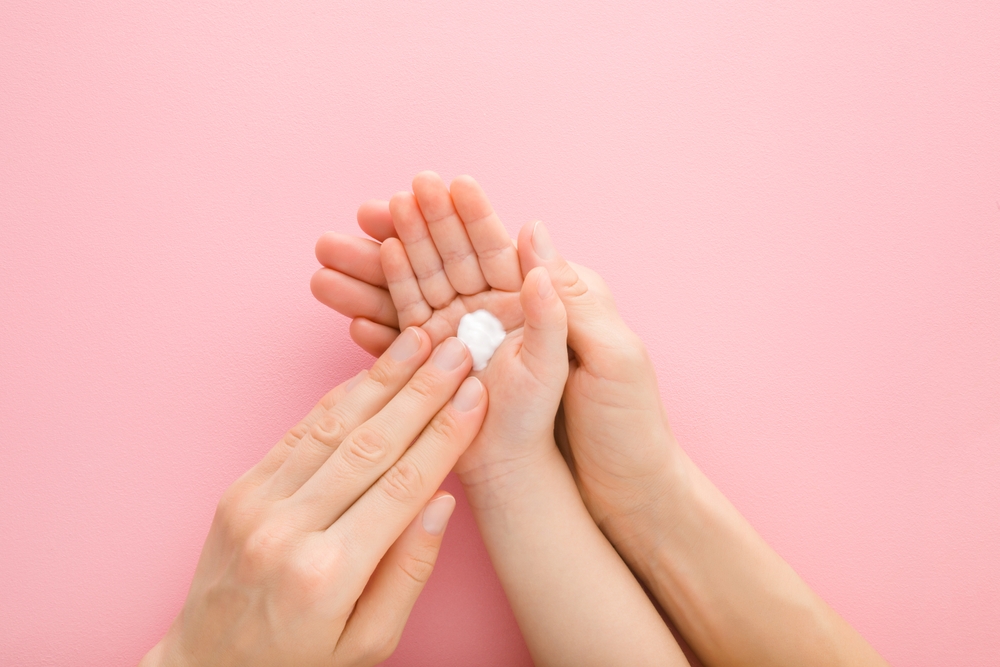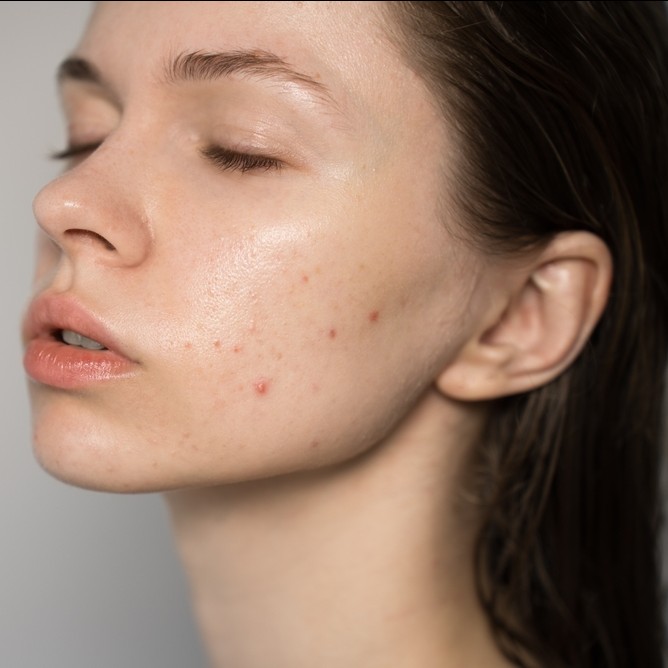The launch of actress Shay Mitchell’s brand, Rini — a skincare line for children aged 4 and up — has sparked discourse among patients, parents, and professionals, raising the question: Is skincare for children, too?
We consulted experts, facialist Mariam Abbas, and aesthetic doctor Dr Anna Hemming to discuss the ethics and necessity of children’s skincare.
Rini launched with a selection of face masks, including ‘everyday’ unicorn and dog sheet masks and hydrogel face masks.
On their website, Shay Mitchell, Esther Song, & Matte Babel shared, “We created Rini because we wanted products that are gentle, trustworthy, and inspire creativity. Elevated by Korean innovation, Rini is where skincare meets play - a world where kids can dream, transform, and explore with dermatologist-tested products parents trust.”
Despite Rini’s emphasis on fun, gentle, and safe skincare, the brand has faced backlash over concerns for children’s skin and their perception of beauty.
Children's skincare: must-have or marketing myth?
“In general, children have naturally balanced skin that rarely needs intervention. Their skin is designed to regulate and protect itself, and sebaceous glands don’t become fully active until puberty,” explains facialist Mariam Abbas.
“Once hormonal activity increases, oil production rises, and this can trigger congestion and acne. Before puberty, the skin’s microbiome is still developing, and unnecessary products can disrupt it.”
What skincare should children use?
“Less is definitely more when it comes to skincare for children. If environmental pollutants or daily grime are a concern, a very gentle, pH-balanced cleanser is sufficient. During harsh weather, especially cold, dry winters, additional hydration may be helpful, but should come from a non-comedogenic, lightweight moisturiser without occlusive ingredients,” says Mariam.
“SPF is essential whenever there is sun exposure, but should not be used before six months of age, as infants have thinner, more reactive skin that may not tolerate chemical filters well.
“If a child has allergy-related or chronic skin conditions such as eczema, they should be assessed by a professional to ensure appropriate and safe skincare guidance.”
“Beyond those basics, most 'anti-ageing' actives (retinoids, high-strength acids, complex multi-step routines) are unnecessary before and during early puberty and may be harmful. Recent trends show pre-teens buying adult actives due to social media and retail hype; dermatologists have publicly warned against this,” adds Dr Anna Hemming.
Dr Hemming recommends different skin routines throughout childhood:
0–3 years: Tepid water or very mild, fragrance-free cleanser as needed; emollients for dryness/eczema; broad-spectrum SPF when outdoors; avoid salicylic acid.
4–8 years: Gentle cleanser; bland, fragrance-free moisturiser if dry; sunscreen daily with outdoor exposure. Actives are generally not needed.
9–12: As above; introduce deodorant if needed. For early comedones, consider very gentle spot treatments only (with clinician advice).
13–18: Add targeted acne care if required: non-comedogenic moisturiser, cautious use of benzoyl peroxide or low-strength BHA/azelaic acid; prescription retinoids only with medical guidance. Always prioritise daily SPF. Guidance from paediatric dermatology emphasises a short routine built around cleanser, moisturiser, and sunscreen.
The dangers of promoting skincare for children
“Using harsh actives or unnecessary emollients on children’s skin can interfere with the natural development of the skin’s microbiome and may contribute to long-term skin issues,” continues Mariam.
“Certain ingredients in skincare formulations, including potent actives, fragrances, or preservatives, can disrupt the skin barrier, leading to increased sensitivity, dryness, or irritation.
“While it is good to help children establish healthy habits and get them used to simple routines, early intervention can impact the skin’s ability to self-regulate and cause a long-term dependency on corrective products.
“Introducing skincare to young children can also be a source of stress, anxiety, and an unhealthy focus on appearance. Exposure to marketed beauty ideals can impact self-perception and cause long-term self-esteem issues.”
The impact of complex skincare routines on children’s skin
“Exposure to lengthy skin routines and products that have been formulated for adult skin can cause barrier disruption, allergies, skin irritation, and sensitise skin in the long term,” emphasises Mariam.
“Children don’t have a properly developed barrier or microbiome until after puberty. Even as young adolescents, their skin is readjusting in response to hormonal changes and needs to find its natural equilibrium.
“Interventions with harsh exfoliating acids, heavy moisturisers and strong actives can disrupt the healthy development and normal functioning of their skin.”
“Over-cleansing, exfoliating acids, and fragranced products can trigger irritant or allergic dermatitis and periorificial dermatitis; social-media 'routines' frequently omit sunscreen and often include irritants,” adds Dr Hemming.
Is marketing shaping children’s perceptions of beauty?
“Gimmicky marketing and social media trends that aren’t based on any scientific or clinical evidence to support their claims can distort children’s perception and understanding of beauty, while creating social pressure and unrealistic expectations,” explains Mariam.
“Targeted ‘beauty’ trends often promote unattainable beauty ideals. Exposure to these ‘fake’ ideals can affect mental health, contributing to anxiety and low self-esteem. Children can become dissatisfied with their own appearance, and as they grow older, they can develop unhealthy attitudes towards their body, skin and physical appearance.”
“Platforms amplify idealised, edited images and 'haul' culture; higher exposure to appearance-focused feeds is associated with more internalisation of beauty ideals and comparison. Recent investigations also show vulnerable teens’ feeds containing more body- and eating-disorder–adjacent content,” adds Dr Hemming.
“Retail and influencer content aimed at 'Sephora kids' glamorises anti-ageing for pre-teens; UK dermatologists have criticised the expansion into products for very young children.”
Regulations around advertising skincare to minors
Dr Hemming explains that currently, “since May 2022, ads for cosmetic interventions such as fillers must not target under-18s across media. However, this does not cover everyday skincare products.”
She explains that “clear age-suitability labelling, such as retinoids 18+”, is still missing, and there should be “restrictions on child-appeal packaging for actives and tighter rules on influencer/retail content that encourages complex routines or anti-ageing claims to pre-teens. Some jurisdictions are debating age-based sales limits for anti-ageing actives; the UK could review similar measures.’
“There should absolutely be regulation. Children should be encouraged to develop healthy self-care habits which focus on well-being rather than trending skincare. I think there should be clear regulations around advertising to both minors and adults, especially where claims are unsubstantiated and misleading,” advocates Mariam.
How can professionals help educate parents about safe skincare for kids?
“Digital platforms and in-clinic advice both offer an effective way to educate parents about safe skincare practices for children. Many parents actively seek guidance, particularly if they experienced skin issues such as acne during their own adolescence and understand the psychological impact these challenges can have,” recommends Mariam.
“Professionals can provide evidence-based advice on how to support healthy skin development, helping parents make informed choices and avoid unnecessary or potentially harmful interventions. Early education can equip families to focus on prevention and healthy habits rather than chasing quick fixes or reacting to problems after they arise.”
“Professionals can teach families to spot sponsored content, edited skin, and 'routine overuse.” Signpost to credible, dermatologist-led sources,” adds Dr Hemming.
You might also like to read… New study reveals acne is keeping nearly 1 in 3 teens from school



